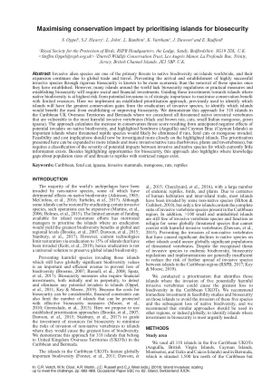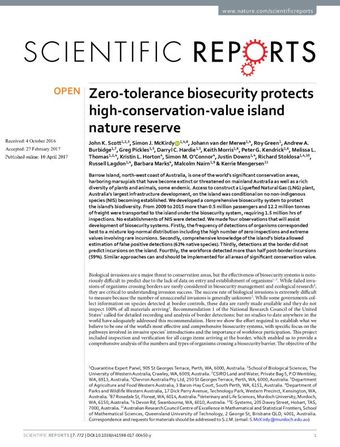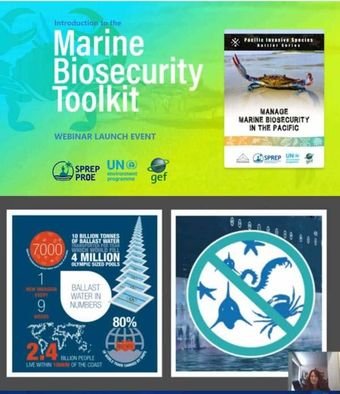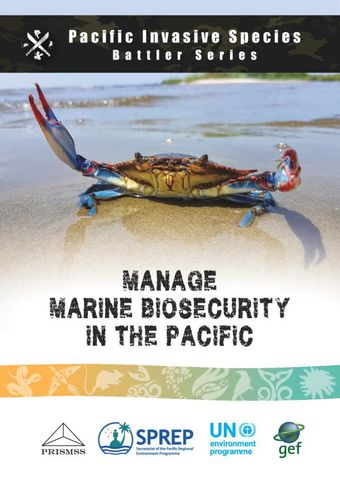Maximising conservation impact by prioritising islands for biosecurity
- Description:
- Invasive alien species are one of the primary threats to native biodiversity on islands worldwide, and their expansion continues due to global trade and travel. Preventing the arrival and establishment of highly successful invasive species through rigorous biosecurity is known to be more economic than the removal of these species once they have established. However, many islands around the world lack biosecurity regulations or practical measures and establishing biosecurity will require social and financial investments. Guiding these investments towards islands where native biodiversity is at highest risk from potential invasions is of strategic importance to maximise conservation benefit with limited resources. Here we implement an established prioritisation approach, previously used to identify which islands will have the greatest conservation gains from the eradication of invasive species, to identify which islands would benefit the most from establishing or improving biosecurity. We demonstrate this approach for 318 islands in the Caribbean UK Overseas Territories and Bermuda where we considered all threatened native terrestrial vertebrates that are vulnerable to the most harmful invasive vertebrates (black and brown rats, cats, small Indian mongoose, green iguana). The approach calculates the increase in conservation threat score resulting from anticipated negative effects of potential invaders on native biodiversity, and highlighted Sombrero (Anguilla) and Cayman Brac (Cayman Islands) as important islands where threatened reptile species would likely be eliminated if rats, feral cats or mongoose invaded. Feasibility and cost implications should now be investigated more closely on the highlighted islands. The prioritisation presented here can be expanded to more islands and more invasive/native taxa (herbivores, plants and invertebrates), but requires a classification of the severity of potential impacts between invasive and native species for which currently little information exists. Besides highlighting opportunities for biosecurity, this approach also highlights where knowledge gaps about population sizes of and threats to reptiles with restricted ranges exist.
- Display date:
- 2019
- Collections:
- Secretariat of the Pacific Regional Environment Programme (SPREP)
- Publisher:
- International Union for Nature Conservation (IUCN)
- Content partner:
- Secretariat of the Pacific Regional Environment Programme (SPREP)
- Availability:
- Not specified
-
Copyright status: All rights reservedFind out more about what you are able to do with this itemThis item is all rights reserved, with means you'll have to get permission from Secretariat of the Pacific Regional Environment Programme (SPREP) before using it. For more information, please see our use and reuse page.What can I do with this item?Non-infringing useNZ copyright law does not prevent every use of a copyright work, and this item may be hosted by an international institute or organisation. You should consider what you can and cannot do with a copyright work.No sharingYou may not copy and/or share this item with others without further permission. This includes posting it on your blog, using it in a presentation, or any other public use.No modifyingYou are not allowed to adapt or remix this item into any other works.No commercial useYou may not use this item commercially.
Related items
Welcome and warm Pasifik greetings
The information on this site has been gathered from our content partners.
The names, terms, and labels that we present on the site may contain images or voices of deceased persons and may also reflect the bias, norms, and perspective of the period of time in which they were created. We accept that these may not be appropriate today.
If you have any concerns or questions about an item, please contact us.



